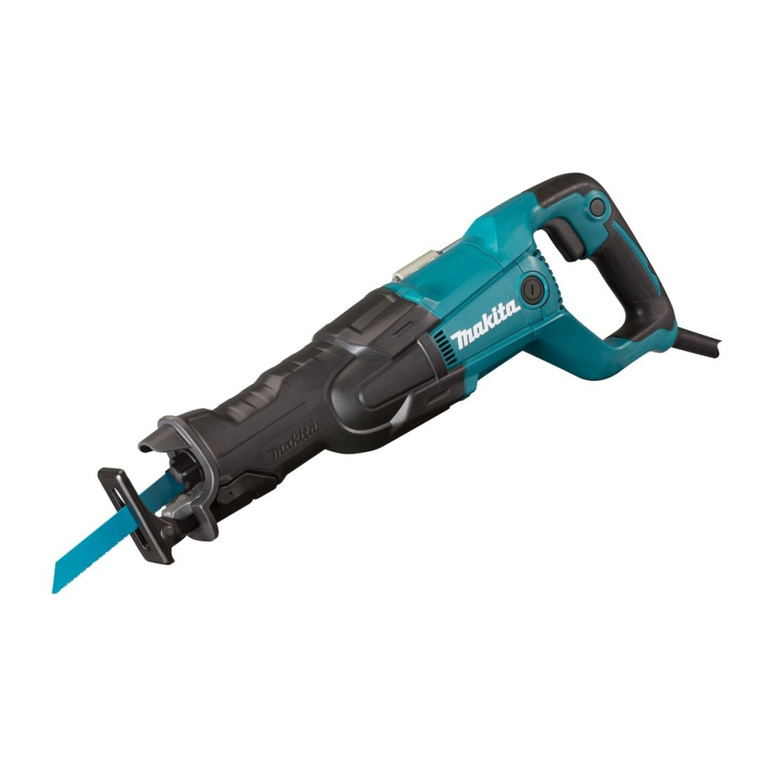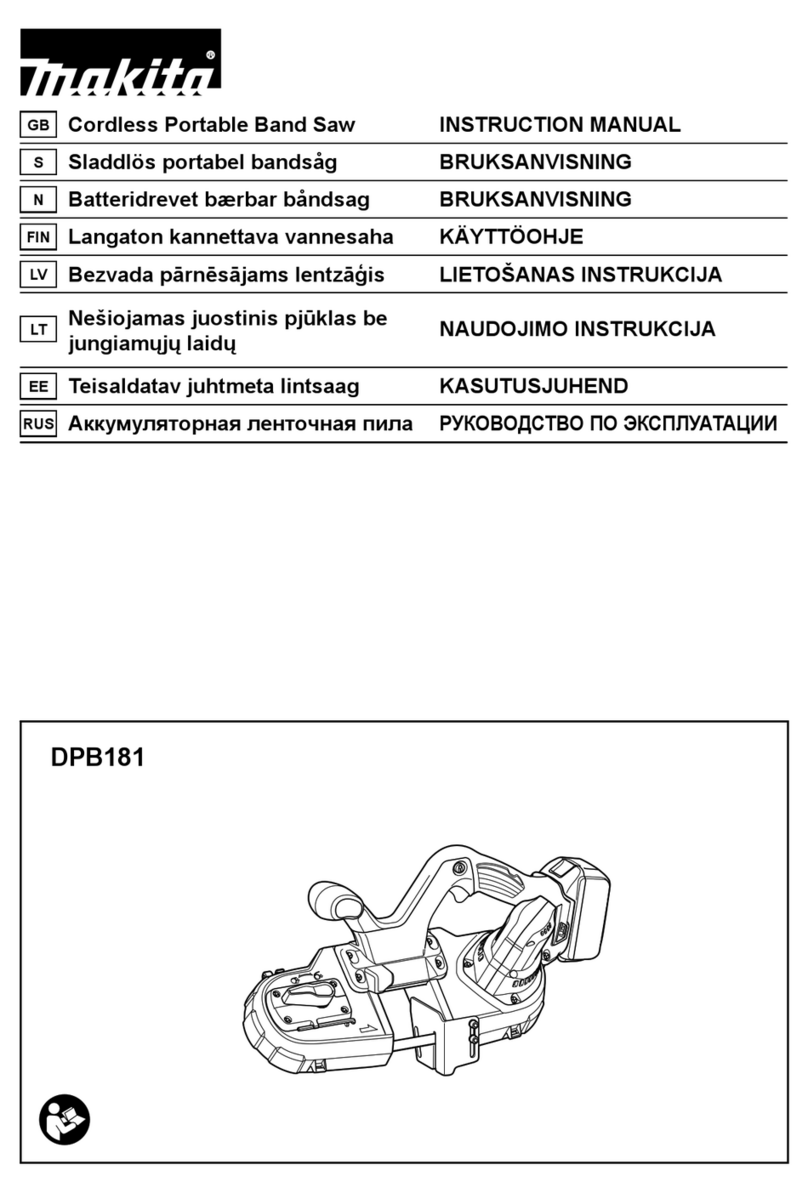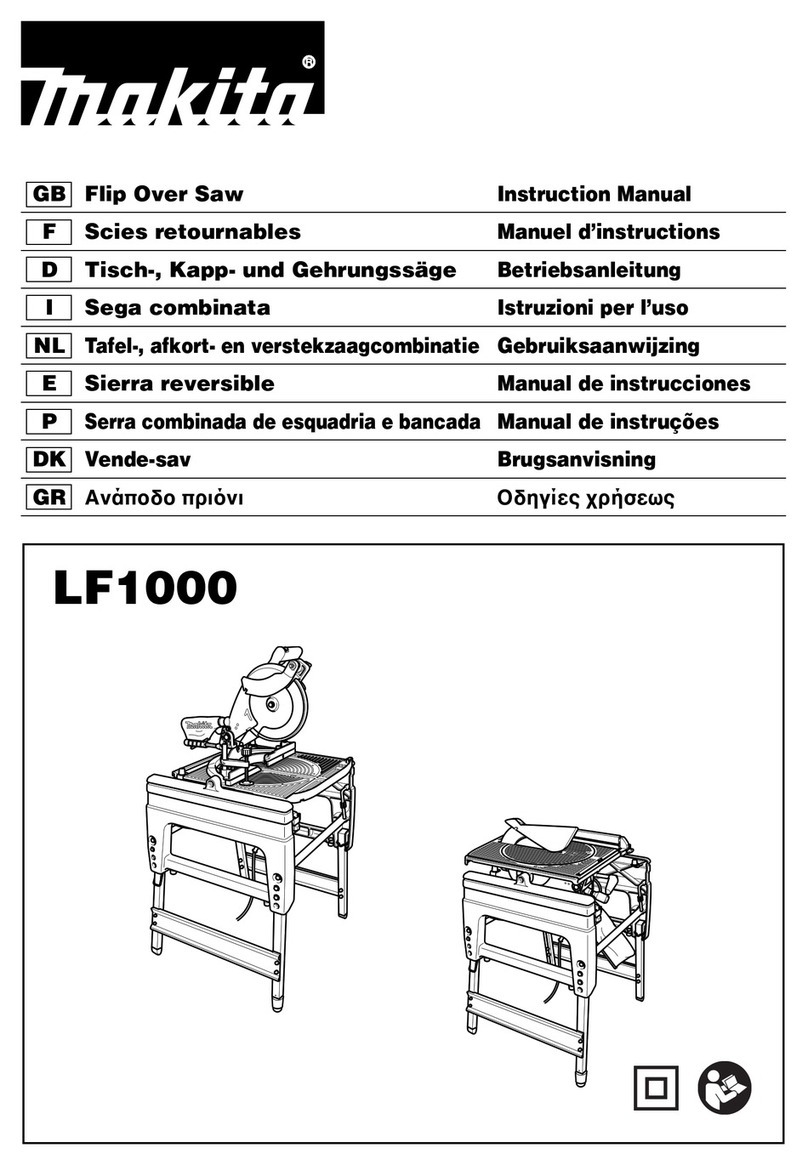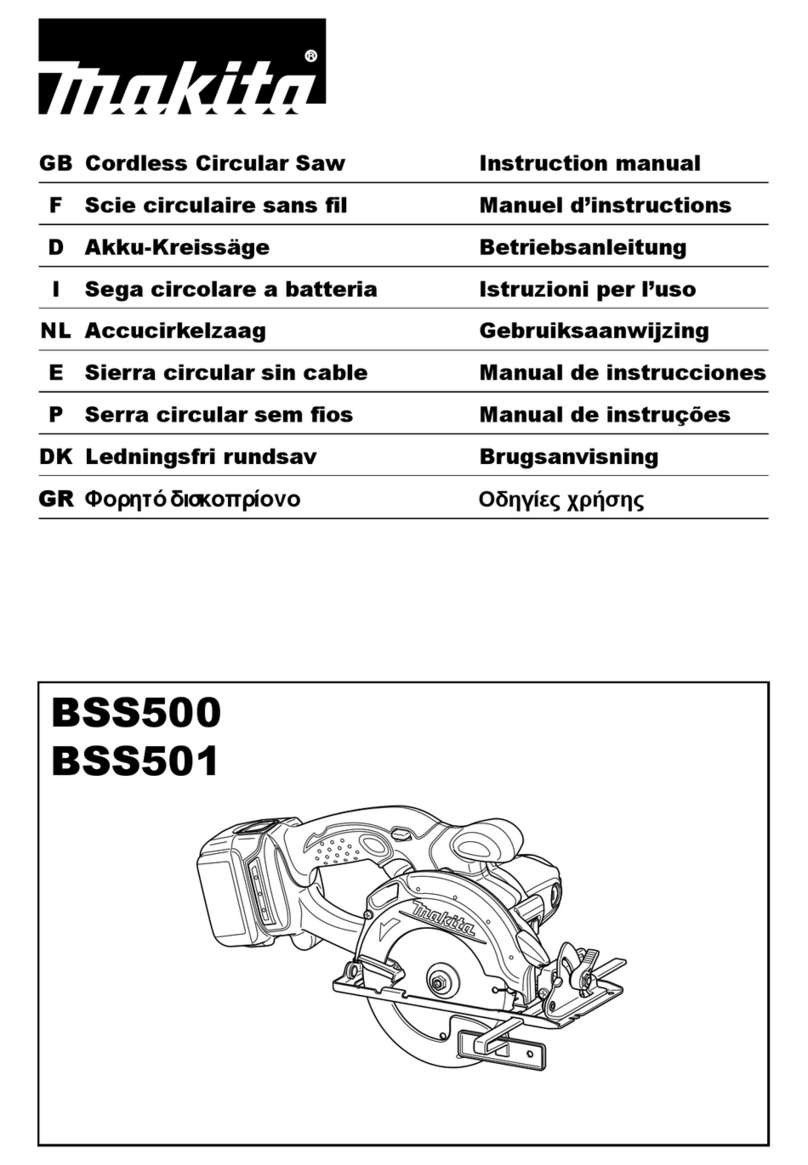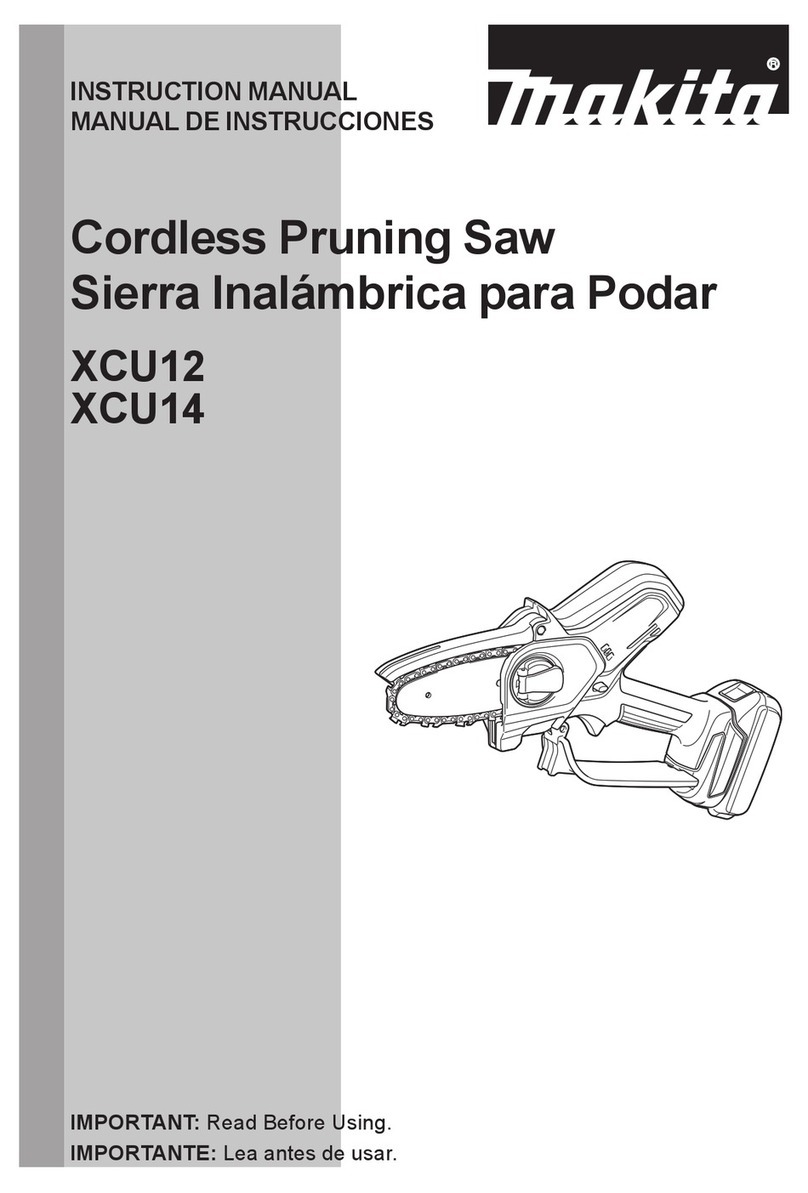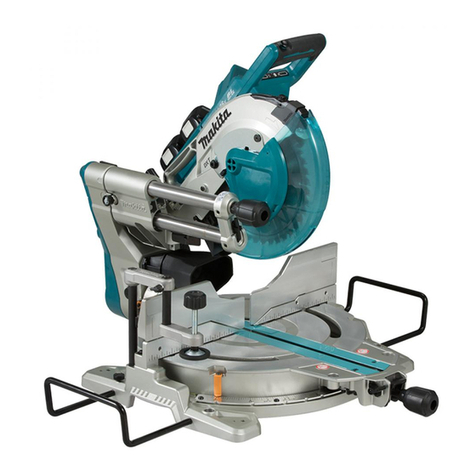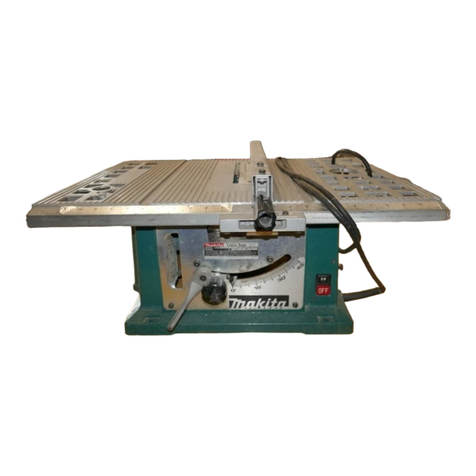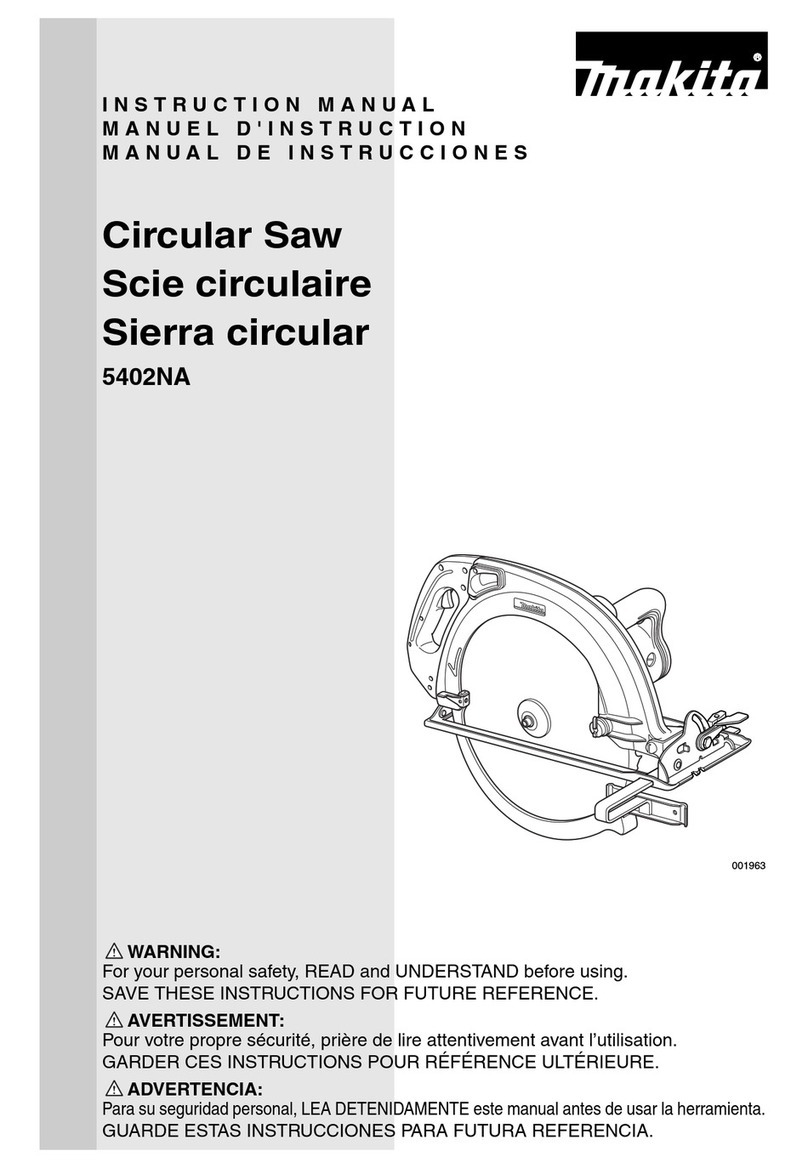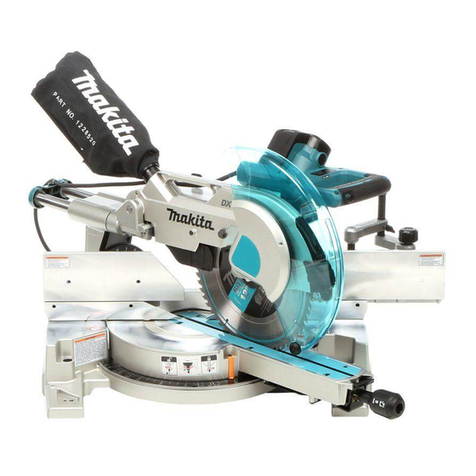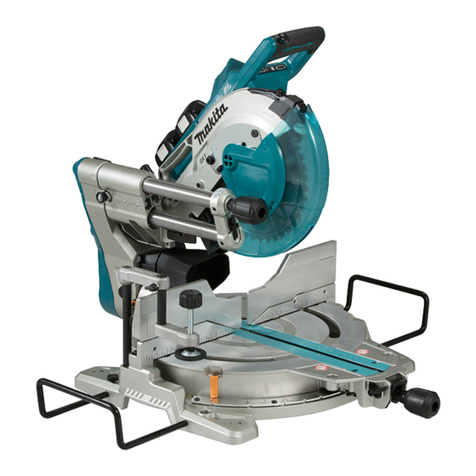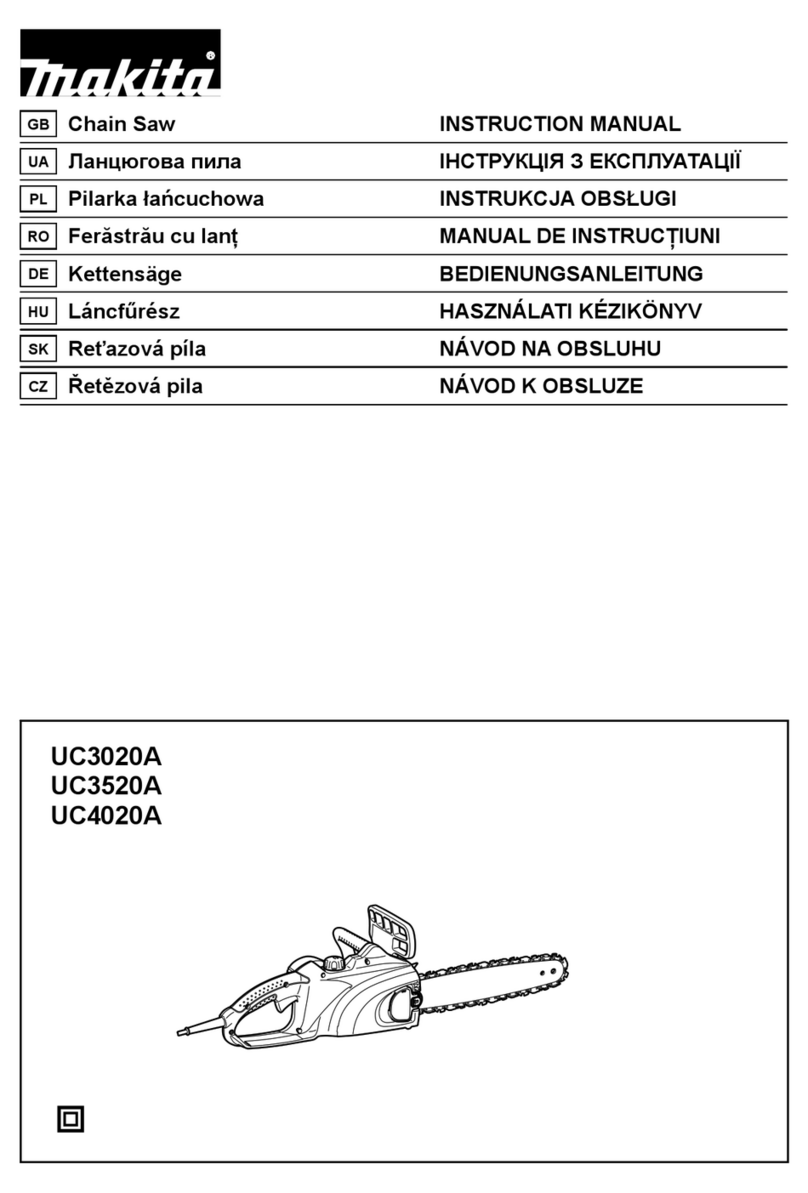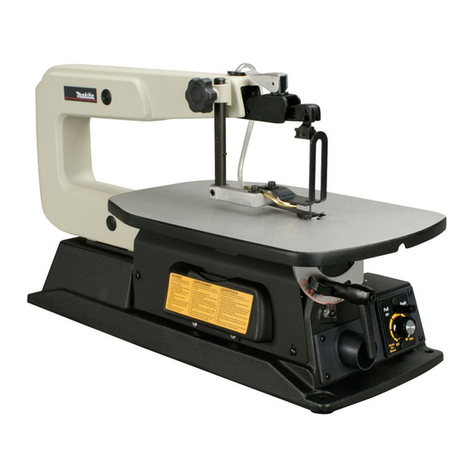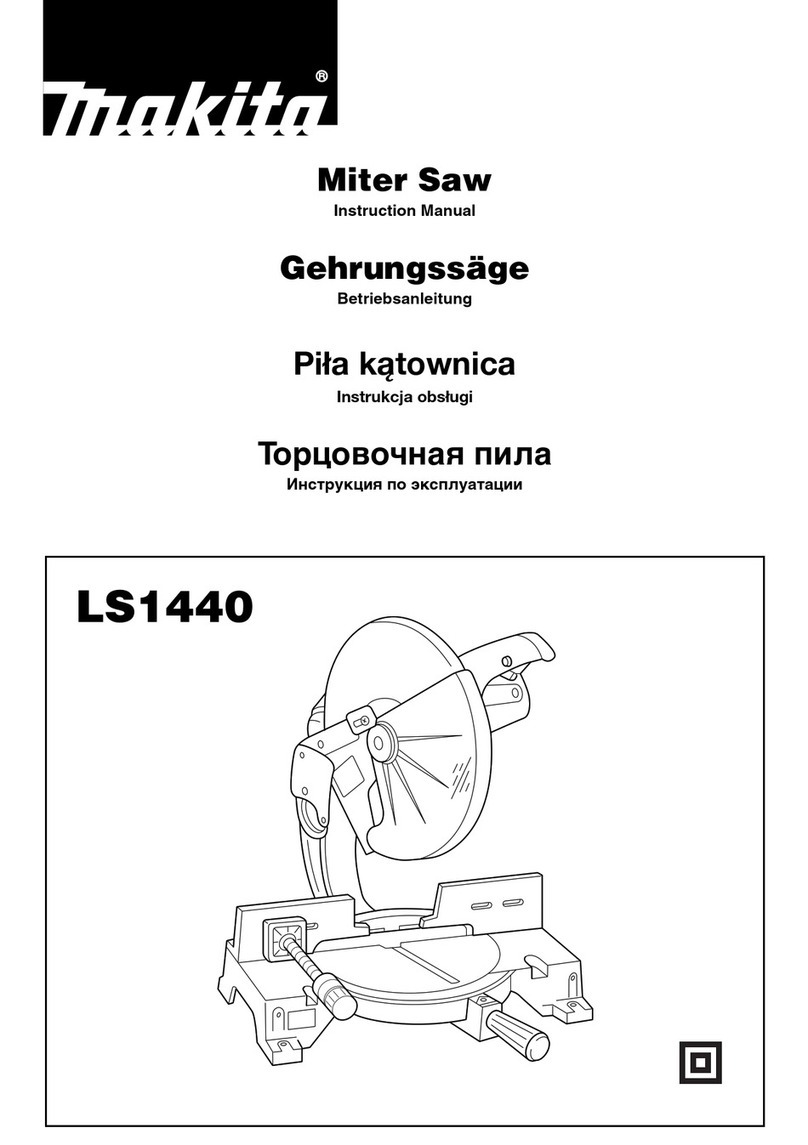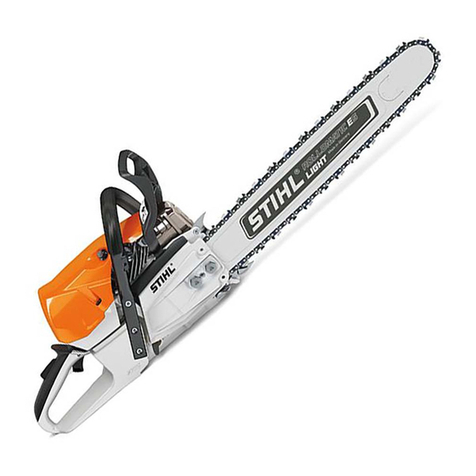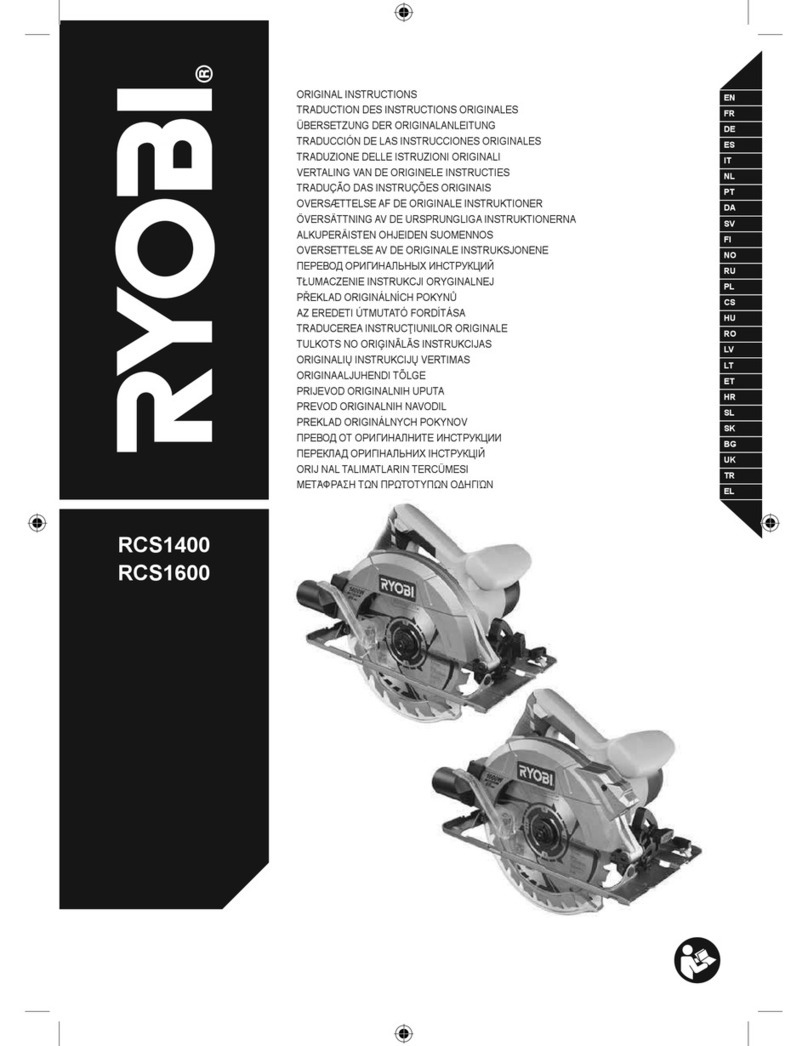
6
Adjusting the shoe
Fig.3
Fig.4
When the blade loses its cutting efficiency in one place
along its cutting edge, reposition the shoe to utilize a
sharp, unused portion of its cutting edge. This will help to
lengthen the life of the blade. To reposition the shoe,
push the shoe button in the "A" direction with a click and
reposition as shown in the figure which allows you to
make five-way adjustment. To secure the shoe, push the
shoe button in the "B" direction with a click.
Switch action
Fig.5
CAUTION:
• Before inserting the battery cartridge into the tool,
always check to see that the switch trigger actuates
properly and returns to the "OFF" position when
released.
• When not operating the tool, depress the lock-off
button from A side to lock the switch trigger in the
OFF position.
To prevent the switch trigger from accidentally pulled, the
lock-off button is provided.
To start the tool, depress the lock-off button from B side
and pull the switch trigger.
Tool speed is increased by increasing pressure on the
switch trigger. Release the switch trigger to stop. After
use, always press in the lock-off button from A side.
Lighting up the front lamp (For BJR181)
Fig.6
CAUTION:
•
Do not look in the light or see the source of light directly.
Pull the switch trigger to light up the lamp. The lamp
keeps on lighting while the switch trigger is being pulled.
The light automatically goes out 10 - 15 seconds after the
switch trigger is released.
NOTE:
• Use a dry cloth to wipe the dirt off the lens of lamp.
Be careful not to scratch the lens of lamp, or it may
lower the illumination.
Hook (For BJR181)
Fig.7
CAUTION:
• Depress the lock-off button from A side to lock the
switch trigger in the OFF position. (See the section
titled " switch action " .)
• Never hook the tool at high location or on
potentially unstable surface.
The hook is convenient for hanging the tool temporarily.
To use the hook, simply lift up hook until it snaps into the
open position.
When not in use, always lower hook until it snaps into the
closed position.
ASSEMBLY
CAUTION:
• Always be sure that the tool is switched off and the
battery cartridge is removed before carrying out
any work on the tool.
Installing or removing the saw blade
CAUTION:
• Always clean out all chips or foreign matter
adhering to the blade, blade clamp and/or slider.
Failure to do so may cause insufficient tightening of
the blade, resulting in a serious injury.
To install the saw blade, always make sure that the blade
clamp lever is in released position on the insulation
cover before inserting the saw blade. If the blade clamp
lever is in fixed position, rotate the blade clamp lever in
the direction of the arrow so that it can be locked at the
released positon .
Fig.8
Insert the saw blade into the blade clamp as far as it will
go. The blade clamp lever rotates and the saw blade is
fixed. Make sure that the saw blade cannot be extracted
even though you try to pull it out.
Fig.9
NOTE:
• If you do not insert the saw blade deep enough, the
saw blade may be ejected unexpectedly during
operation. This can be extremely dangerous.
If the lever is positioned inside the tool, switch on the tool
just a second to let the blade out as shown in the figure.
Remove the battery cartridge from the tool.
To remove the saw blade, rotate the blade clamp lever in
the direction of the arrow fully. The saw blade is removed
and the blade clamp lever is fixed at the released
position .
Fig.10
NOTE:
• Keep hands and fingers away from the lever during
the switching operation. Failure to do so may cause
personal injuries.
• If you remove the saw blade without rotating the
blade clamp lever fully, the lever may not be locked
in the released position . In this case, rotate the
blade clamp lever fully again, then make sure that
the blade clamp lever locked at the released
position .
